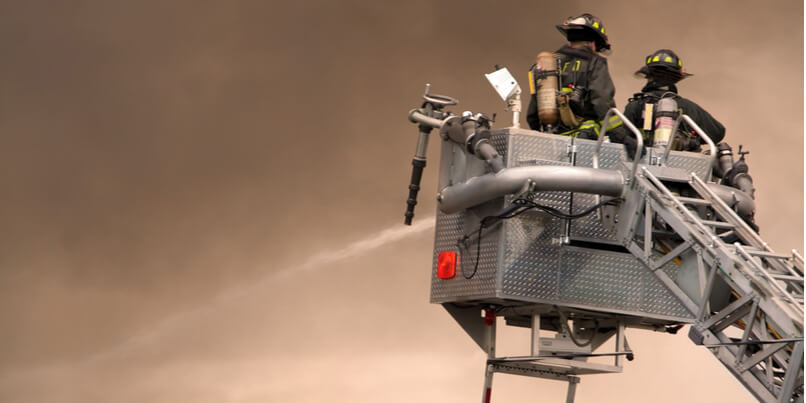 When the pressure is on to make quick decisions in emergency response situations, the value of practical personal experience is something that can never be underestimated.
When the pressure is on to make quick decisions in emergency response situations, the value of practical personal experience is something that can never be underestimated.
But while the "human factor" remains an inestimable force, it is also essential that first responders have access to the appropriate technological support to enable them to work safely and effectively in the field.
In the US, the Department of Homeland Security (DHS) Science and Technology Directorate (S&T) works in close collaboration with the nation's emergency response community.
Their recent projects have included the development of body-worn cameras that activate without responder manipulation, thermal sensors for firefighters that provide early detection of infrared radiation (IR), and wearable smart chemical sensors that warn responders of toxic exposure.
The International Forum to Advance First Responder Innovation (IFAFRI) brings together global industry and academia to identify common capability gaps within first response - in particular the ability to rapidly identify hazardous agents, and to detect, monitor and analyse hazards in real time.
More recently, an exciting array of new technologies have been put to use within the emergency services sector - including an eCall vehicle alarm system that delivers automated messages to emergency services following an accident, the deployment of drones for search and rescue, and the development of artificial intelligence (AI) solutions for firefighters.
Advancements in radiation safety training
New innovations in simulator detector technology for radiation safety training are also playing an important role in supporting first response personnel.
Unlike other forms of hazardous materials where the threat may be clearly evident, ionising radiation is a formidable and invisible force.
So it is even more vital that first responders are equipped with the correct tools, that they are skilled in interpreting the readings they obtain and that they are confident to act on that information.
Enhanced simulator training systems
Incorporating the use of simulator detector equipment in radiation training exercises offers an opportunity to significantly enhance the quality of a trainee's learning experience.
The effectiveness of the training, however, will depend on a number of key factors.
Firstly there is the realism of the simulator's user interface components (the visual display, indicators, switch panel, vibrator, sounder etc) which should be designed to match as closely as possible the look, feel and functionality of the actual device.
As trainees approach or move away from the simulation source, the response speed and characteristics of the simulation will also be important in providing an accurate depiction of the behaviour of the actual detector.
Also key, is the extent to which trainees are able to experience the practical applications of inverse square law, time, distance and shielding. Different shielding effects will need to be realistically represented, for example, as will the effects of user body shielding for source location.
The consistency and repeatability of the simulation will be vital in ensuring that trainees are able to repeat the same scenario, in the same location, and receive the same result - and that the readings obtained on different types of simulator are within the accepted tolerances of the actual detectors.
From the trainer's perspective, the whole life cost of ownership of the device will undoubtedly be an important consideration.
It may be important, for example, that the simulator uses only the same batteries as the original detector, that it requires no regular calibration and that there is no need for costly and time-consuming preventative maintenance.
The development of innovative simulator detector technologies, such as Argon's RadEye SIM, offers the opportunity for first responders to enhance the timeliness, precision and effectiveness of their response to radiological emergencies.
For radiation safety instructors there is also the benefit of being able to create highly realistic and compelling radiation training exercises that are free from regulatory, environmental and health and safety concerns.






